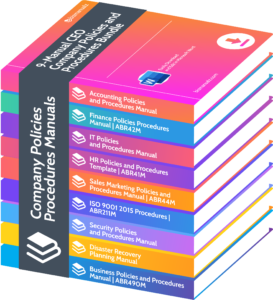COO Techniques Implementing Process Improvement

Are you struggling to streamline processes and improve efficiency in your company? Look no further! In this article, we will discuss the key techniques used by COOs to successfully implement process improvement in their organizations. With the ever-increasing competition and constantly changing business landscape, it is crucial for companies to continuously improve their processes to stay ahead. COO Techniques Implementing Process Improvement.
What Are COO Techniques?
COO techniques encompass a range of strategies aimed at optimizing operational processes and enhancing overall efficiency.
These techniques involve assessing current workflows, identifying areas for improvement, implementing innovative solutions, and monitoring outcomes to ensure sustained progress.
By leveraging COO techniques, organizations can streamline operations, reduce costs, and elevate performance across various functional areas.
So, what exactly are COO techniques? They are methods used to improve and streamline operational processes in order to increase efficiency and performance.
These techniques involve analyzing current workflows, identifying areas for improvement, implementing innovative solutions, and tracking progress to ensure sustained success. By utilizing COO techniques, organizations can reduce costs and enhance performance in various functional areas.
What Is the Purpose of COO Techniques?
COO techniques serve to identify and address process inefficiencies, enhance quality, reduce costs, and elevate customer satisfaction.
By employing methods like value stream mapping and lean Six Sigma, companies can improve their operational effectiveness and achieve sustainable growth. In fact, implementing COO techniques can result in a 30% increase in operational efficiency.
How Are COO Techniques Used in Process Improvement?
- Identify processes: Analyze current workflows and identify areas for improvement.
- Implement COO techniques: Utilize strategies such as Lean Six Sigma to streamline operations.
- Measure performance: Evaluate the impact of changes made through COO techniques.
- Employee involvement: Engage staff in continuous improvement efforts.
- Monitoring and adapting: Regularly monitor processes and adapt COO techniques as needed.
To effectively implement COO techniques in process improvement, organizations should prioritize employee training, establish clear communication channels, and maintain a culture of continuous improvement.
What Are the Steps Involved in COO Techniques?
- Define the scope: Clearly outline the process or area that needs improvement.
- Assemble the team: Gather individuals with diverse skills and perspectives.
- Understand the current state: Analyze the existing process thoroughly.
- Identify opportunities: Pinpoint areas for enhancement and prioritize them.
- Develop an action plan: Create a roadmap for implementing improvements.
Pro-tip: Keep all stakeholders engaged and supportive by consistently communicating the progress and benefits of COO techniques.
How Do COO Techniques Help in Identifying Process Improvement Opportunities?
- Identifying bottlenecks: COO techniques analyze processes to pinpoint where slowdowns or inefficiencies occur.
- Root cause analysis: This method helps in uncovering the underlying reasons for process issues, enabling targeted improvements.
- Data-driven insights: Utilizing metrics and data, COO techniques provide a factual basis for identifying areas needing enhancement.
By considering these aspects, COO techniques can effectively assist in identifying process improvement opportunities.
What Are the Benefits of Implementing COO Techniques?
When it comes to implementing process improvement, COO techniques have proven to be highly effective. These techniques, which are designed to streamline operations and optimize resources, offer a plethora of benefits for businesses.
In this section, we will discuss the various benefits that come with implementing COO techniques. From increased efficiency to better customer satisfaction, we will explore how these techniques can positively impact a company’s operations.
1. Increased Efficiency
- Implement standardized procedures to increase efficiency and streamline operations.
- Automate repetitive tasks to reduce time and labor and improve efficiency.
- Optimize resource allocation for maximum output and improved efficiency.
- Eliminate bottlenecks and unnecessary steps in processes to increase efficiency.
2. Improved Quality
- Incorporate strict quality control measures throughout the production process.
- Conduct regular quality audits to identify and improve upon any areas of weakness.
- Invest in employee training to ensure a thorough understanding of quality standards.
- Utilize customer feedback to address any quality issues and make necessary improvements.
For example, a manufacturing company implemented rigorous quality checks resulting in a significant improvement in product quality and a decrease in customer complaints. The company’s commitment to quality led to increased customer satisfaction and a higher demand for their products.
3. Cost Savings
- Implement energy-efficient practices to reduce utility expenses and achieve cost savings.
- Optimize supply chain to minimize inventory holding costs and save money.
- Automate repetitive tasks to lower labor costs and increase cost savings.
- Utilize technology for streamlined operations and reduced operational expenses, resulting in cost savings.
4. Better Customer Satisfaction
- Enhance communication: Engage with customers to understand their needs and expectations and ultimately achieve better customer satisfaction.
- Implement feedback system: Gather and analyze customer feedback to identify areas for improvement and enhance overall customer satisfaction.
- Personalize customer experience: Tailor products and services to meet individual customer preferences and increase customer satisfaction.
- Ensure consistency: Maintain high service and product quality to build customer trust and loyalty and ultimately improve customer satisfaction.
What Are the Different Types of COO Techniques?
In the world of business, continuous improvement is crucial for staying competitive and achieving success. One way to achieve this is through the use of COO techniques. These techniques aim to identify and eliminate inefficiencies in processes, resulting in increased efficiency and productivity.
There are various types of COO techniques, each with its own unique approach and benefits. In this section, we will discuss the different types of COO techniques, including value stream mapping, root cause analysis, process mapping, and Lean Six Sigma, and how they can help improve processes within an organization.
1. Value Stream Mapping
- Understand Current State: Utilize Value Stream Mapping to document the current state of processes, including material and information flow.
- Identify Waste: Pinpoint areas of waste and inefficiency in the process.
- Design Future State: Develop a plan for the ideal future state of the process, removing waste and streamlining flow.
- Implement Changes: Execute the improvements outlined in the future state design.
- Continuous Improvement: Continuously review and optimize the process to enhance efficiency.
2. Root Cause Analysis
- Identify the Problem: Define the issue and gather data on its occurrence.
- Collect Data: Gather relevant information to understand the problem thoroughly.
- Identify Possible Causes: Generate a list of potential causes contributing to the problem.
- Perform Root Cause Analysis: Use tools like Fishbone Diagram or 5 Whys to pinpoint the core reason for the issue.
- Develop Solutions: Formulate corrective actions based on the findings from the root cause analysis.
Pro Tip: In root cause analysis, it is important to focus on identifying the underlying reason rather than just addressing surface-level symptoms.
3. Process Mapping
- Identify the process: Define the specific process to be mapped.
- Gather information: Collect data on the process from start to finish.
- Create a visual representation: Utilize flowcharts or diagrams to map out the steps and decision points.
- Analyze the map: Review the process map for any inefficiencies or opportunities for improvement.
- Implement changes: Based on the analysis, make necessary adjustments to streamline the process.
Pro-tip: When creating process maps, involve team members who are directly involved in the process for accurate insights and better buy-in.
4. Lean Six Sigma
- Define: Clearly outline the problem or improvement opportunity related to Lean Six Sigma principles.
- Measure: Gather relevant data to understand the current state of the Lean Six Sigma process.
- Analyze: Use statistical tools to identify root causes of issues within the Lean Six Sigma framework.
- Improve: Develop and implement solutions using Lean Six Sigma principles to improve efficiency and quality.
- Control: Establish measures to sustain the improvements made through Lean Six Sigma over time.
For effective implementation of Lean Six Sigma, it is crucial to have the support of leadership, provide extensive training, and foster a culture of continuous improvement within the organization.
How Can Companies Implement COO Techniques for Process Improvement?
As companies strive for efficiency and success, implementing COO techniques for process improvement has become crucial. In this section, we will discuss practical steps that companies can take to implement these techniques effectively.
From training and educating employees to utilizing data and metrics to track progress, we will explore the key elements of implementing COO techniques. By following these steps, companies can achieve streamlined and optimized processes for their operations. So, let’s dive into the details of how companies can implement COO techniques for process improvement.
1. Train and Educate Employees
- Identify Training Needs: Assess the skills and knowledge gaps of employees.
- Develop Training Programs: Create tailored programs to address identified needs and educate employees.
- Utilize Various Training Methods: Use workshops, e-learning, and on-the-job training to train and educate employees.
- Encourage Continuous Learning: Promote a culture of ongoing education and skill enhancement among employees.
2. Identify Key Processes to Improve
- Assess current processes to identify key areas for improvement.
- Conduct interviews and workshops with employees involved in the processes to determine the most crucial areas for improvement.
- Analyze historical data to pinpoint recurring issues or bottlenecks in the key processes.
- Seek feedback from customers or stakeholders to understand the pain points and expectations related to the key processes.
Pro-tip: Prioritize the key processes with the highest impact on overall efficiency and customer satisfaction.
3. Use Data and Metrics to Track Progress
- Establish relevant KPIs to measure progress and track success.
- Utilize data visualization tools to easily track progress and identify areas for improvement.
- Regularly analyze metrics to identify trends or issues and make necessary adjustments.
- Implement feedback loops to continuously improve strategies based on data and metrics.
4. Continuously Review and Update Processes
- Evaluate Current Processes: Regularly assess existing processes to identify inefficiencies or areas needing improvement.
- Implement Feedback Loops: Establish mechanisms for gathering feedback from employees and customers to pinpoint process shortcomings.
- Stay Abreast of Industry Trends: Continuously monitor industry best practices and technological advancements to ensure processes remain up-to-date and relevant.
- Modify and Enhance Processes: Integrate feedback and insights to adapt and refine processes, fostering continuous improvement and staying ahead of industry trends.
Frequently Asked Questions

What are COO techniques for implementing process improvement?
COO (Chief Operating Officer) techniques for implementing process improvement involve strategies and methods used by COOs to improve processes within an organization, such as streamlining workflows, optimizing resources, and implementing new technologies.
Why is process improvement important for COOs?
Process improvement is important for COOs because it can lead to increased efficiency, productivity, and profitability for the organization. By implementing effective processes, COOs can also improve the overall performance and reputation of the company.
What are some common process improvement tools used by COOs?
COOs may use a variety of tools and techniques to implement process improvement, such as Six Sigma methodologies, Lean principles, value stream mapping, and process mapping software.
How can COOs identify areas for process improvement?
COOs can identify areas for process improvement by conducting process audits, analyzing data and performance metrics, and soliciting feedback from employees and customers.
What are the potential challenges of implementing process improvement as a COO?
Some potential challenges of implementing process improvement as a COO may include resistance to change from employees, lack of resources or support from upper management, and difficulty in accurately measuring the impact of process improvements.
How can COOs ensure the sustainability of process improvements?
To ensure the sustainability of process improvements, COOs can establish clear goals and metrics, regularly review and update processes, and involve employees in the process improvement efforts to foster a culture of continuous improvement.

















Leave a Reply